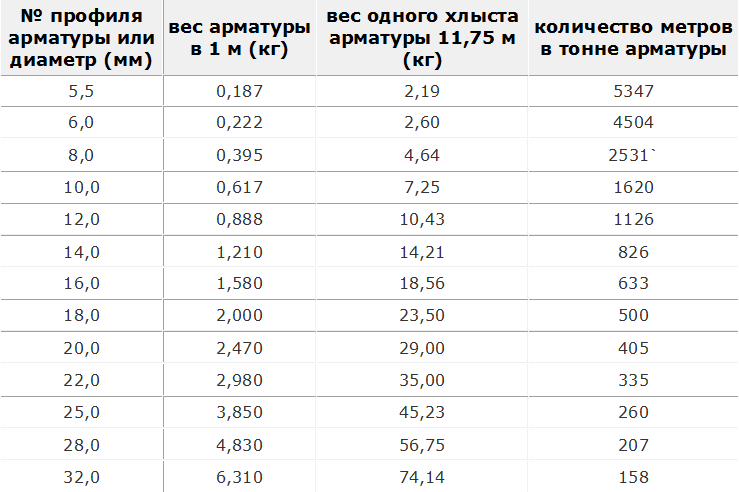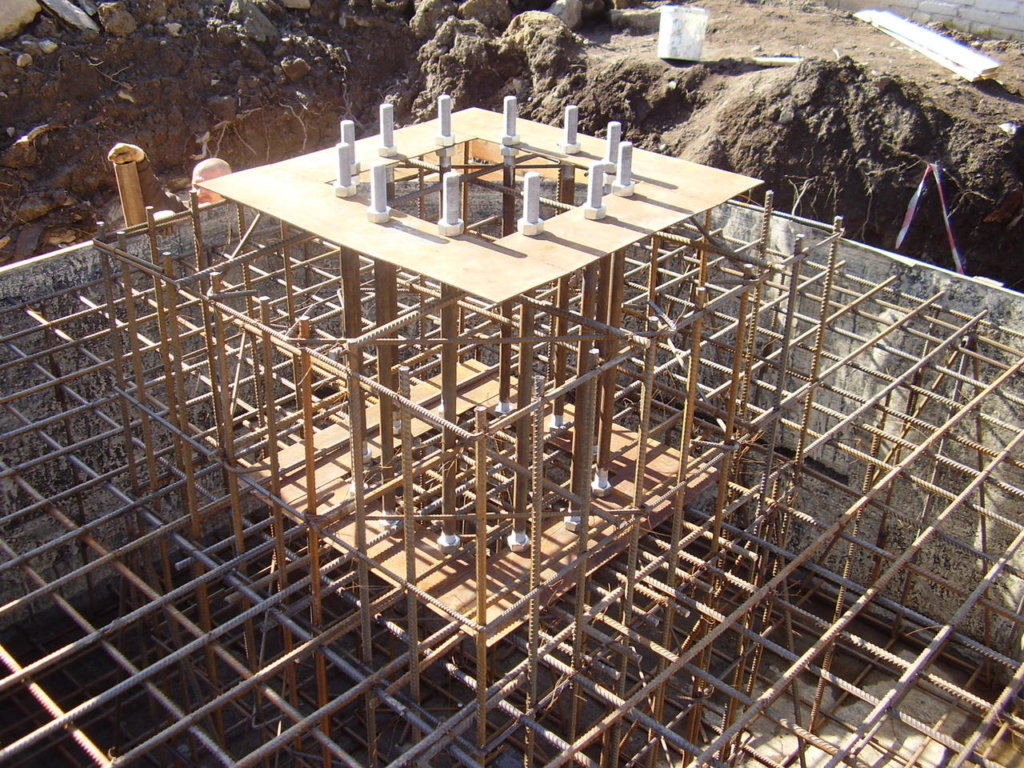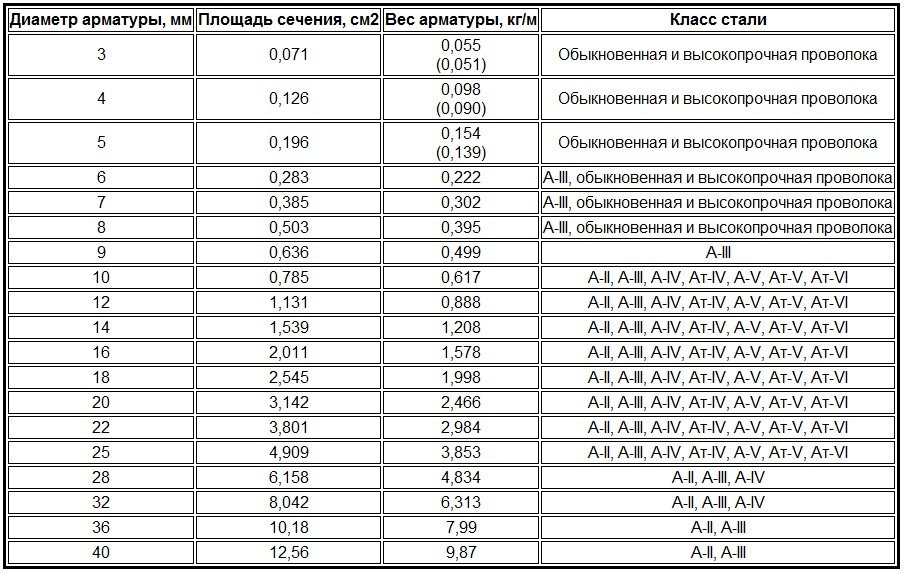Reinforcement, which is used to reinforce reinforced concrete structures, must necessarily meet stringent requirements, namely, be ductile and durable, provide good adhesion to concrete and be distinguished by good weldability.
| Profile number (nominal diameter) | Weight, kg/m |
| 6 | 0,222 |
| 8 | 0,395 |
| 10 | 0,617 |
| 12 | 0,888 |
| 14 | 1,210 |
| 16 | 1,580 |
| 18 | 2,000 |
| 20 | 2,470 |
| 22 | 2,980 |
| 25 | 3,850 |
| 28 | 4,830 |
| 32 | 6,310 |
| 36 | 7,990 |
| 40 | 9,870 |
| 45 | 12,480 |
| 50 | 15,410 |
Reinforcement is an important part of all reinforced concrete structures. The fittings are presented in the form of wire or special rods. The armature performs a number of the following functions, namely:
- structural / distributive - thanks to this function, the rods inside the frame are strengthened by welding them with the working reinforcement. This allows you to ensure a uniform distribution of the entire load on one or another rod support;
- the working function is that the reinforcement takes on the so-called tensile forces that occur when pressure comes to the structure from the outside, or in the case when the own weight of the structure exerts pressure on the structure;
- the assembly function manifests itself in providing support for individual rebars during the assembly of frames. Thanks to this, the entire structure can be in the design position.
Reinforcing elements can be rigid (for example, corners, I-beams and channels), as well as flexible (grids and frames with a corrugated surface). Thus, working type reinforcement is included in reinforced concrete type structures according to the calculation, while distribution and mounting reinforcement is needed to create frames.

The quality of adhesion of reinforcement to concrete may depend on the strength, type of concrete, its age, shrinkage, size, and also on the type of surface. Reinforcement can be bonded to concrete by friction, shear bonding, or cohesion and compression of reinforcement by concrete after shrinkage.

Features of calculating the weight of reinforcement
A running meter of reinforcement is called individual reinforcement bars of periodic and smooth profiles with a length of one meter. The weight of these rods can vary depending on the diameter of the steel reinforcement. Construction organizations in the workflow use reinforcing bars, the mass of which meets the current requirements of GOST - only such steel can be of high quality and meet the required standards.

The weight of the reinforcement is chosen based on its type and diameter, as well as the scope of the planned application.
The mass of a meter of reinforcement (linear), as a rule, depends on the type of periodic profile, namely, on whether its surface is embossed or smooth. It is worth noting that possible protrusions in the form of corrugations or ribs on the surface of the reinforcement significantly improve its adhesion to concrete.
Calculation of fiberglass reinforcement
foundation type
Tape Slab
The strip foundation is a closed contour (tape) - a strip of reinforced concrete laid under all the bearing walls of the building and distributing the weight of the building along its entire perimeter. Thus, resisting the forces of buckling of the soil, avoiding subsidence and warping of the building.
Foundation perimeter length(m)
Width of grillage (foundation tape) (m.)
Height of grillage (foundation tape) (m.)
A slab foundation or a monolithic foundation is a reinforced concrete slab, installed around the entire perimeter of the building. Due to the high labor intensity and significant financial costs for materials and land work, this type of foundation is considered one of the most costly. As a rule, the slab foundation is used in the construction of small and large private houses, on weak foundations, soils.
Length(m)
Width(m)
Cell size(m)
Based on the manufacturing technique, the reinforcing steel used for reinforced concrete structures is divided into two types: hot-rolled bar reinforcement and cold-drawn wire reinforcement. The weight of a meter of hot-rolled reinforcement does not depend on certain mechanical characteristics, which are conditionally divided into six classes: from A-I to A-VI.
| Reinforcing steel class | Profile diameter, mm | steel grade |
| A-I (A240) | 6-40 | St3kp, St3ps, St3sp |
| A-II (A300) | 10-40 40-80 | St5sp, St5ps 18G2S |
| Ac-II (Ac300) | 10-32 (36-40) | 10GT |
| A-III (A400) | 6-40 6-22 | 35GS, 25G2S 32G2Rps |
| A-IV (A600) | 10-32 (6-8) (36-40) | 80C 20ХГ2Ц |
| A-V (A800) | (6-8) 10-32 (36-40) | 23X2G2T |
| A-VI (A1000) | 10-22 | 22H2G2AYU, 22H2G2R, 20H2G2SR |
For example, building reinforcement of class A3 is used to strengthen concrete-type structures for prefabricated objects. The actual weight of the reinforcing bars consists of the mass of all the reinforcing cages of the building, which are subsequently poured with concrete solution throughout the formwork.
